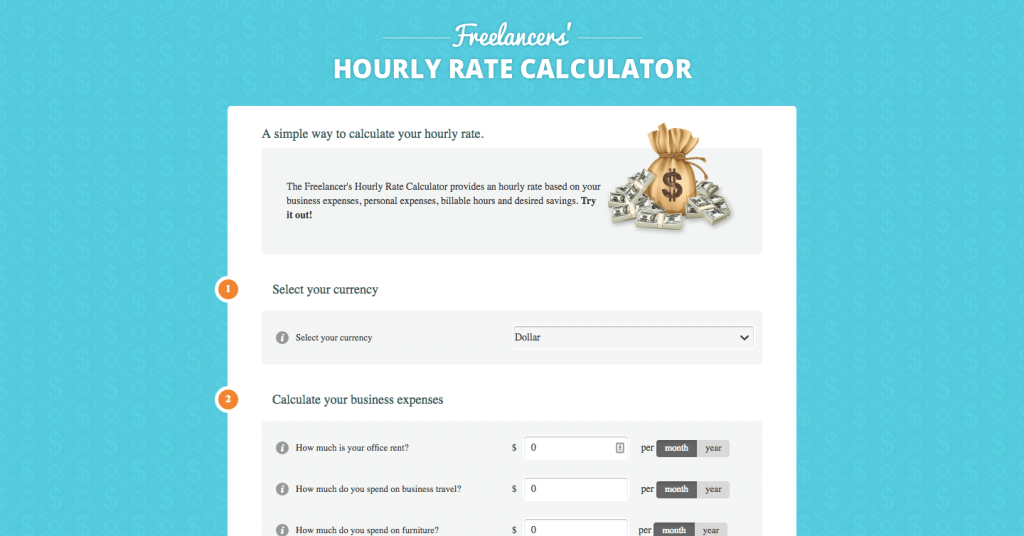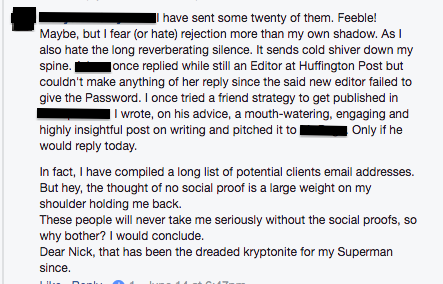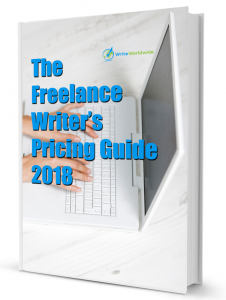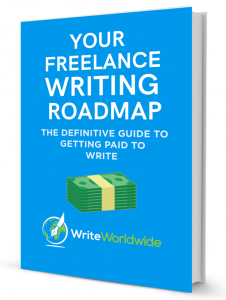Problems include (among others) selecting a niche, starting a career without samples, building a writer’s website, setting rates and landing clients.
No matter what problems you’re facing, know that you’re not alone; there are others who have experienced or are experiencing those problems.
Thankfully there are ways to overcome these stumbling blocks. Here are 7 of the most common problems writers face and solutions to overcome them.
#1 Selecting a Niche
If you were to ask a handful of writers whether selecting a niche is a good idea they’ll likely respond with a resounding, yes. That’s no surprise. Niching lets you develop expertise about a topic, reduces the time it takes to write articles, and allows you to command higher rates.
But there’s one problem.
This advice is not suitable for everyone. For some new freelance writers choosing a niche is a headache. They spend so much time trying to nail down a niche that it becomes a stumbling block and they never get started.
If you’re facing difficulty choosing a niche here are some tips:
- Recognise that you don’t have to select one niche. You can choose several niches. When I started writing I chose several niches: business, technology marketing and small business. You can always niche down over time, and often, your niche will reveal itself as you write more.
- If you aren’t sure about what niches to choose, select them based on your interest in the topic and confidence to deliver.
- Position yourself by service. For instance, I positioned myself as a writer who writes blog posts and guest posts.
Extra reading:
- Choosing a Freelance Writing Niche: Does it Actually Matter (Part 1)
- Choosing a Freelance Writing Niche: Does it Actually Matter (Part 2)
#2 Starting a Writing Career Without Writing Samples

Not having writing samples is also a sticking point for many new writers. They feel that if they don’t have samples, they’ll never build a writing career. The truth is, every successful writer started without samples – and if they overcome that obstacle – you can too.
Here are a few ways to get writing samples if you don’t have any.
Pitch Major Publications
The fastest way to advance your writing career is to get featured in major publications like Huffington Post and Entrepreneur.
Writing samples like these will improve your credibility and let you command higher rates.
Here’s how to get featured in major publications:
Step 1: Find blogs to pitch for writing samples. Typing the following in Google is a good start: “<industry/topic> blogs that accept guest posts.”
Step 2: Build an excel spreadsheet of suitable blogs to pitch. Save blog names and website URLs.
Step 3: Personalise your pitch by understanding the audience of the blog. Make sure you follow the editorial guidelines.
Step 4: Write the perfect pitch. If you’re looking for a pitching template, download our Pitching Template Cheat Sheet.
Step 5: Target your pitch. Make sure you’re targeting the correct person. Contact the editor or content manager. If you need help finding the editor’s email address, read 5 Simple Techniques to Find an Editor’s’ Email.
If you want more information on how to start a writing career with no samples, read:
- How to Start a Freelance Writing Career With No Writing Samples (Part 1)
- How to Start a Freelance Writing Career With No Writing Samples (Part 2)
But getting featured in major publications isn’t the only way to build samples. You can:
- Start your own blog and write content for the industry you want to target
- Write a guest post for a friend’s blog
- Write your own samples for the industry you want to write for. Keep those samples on your computer and pitch these ideas to publications
- Approach a friend or family member to see if they need someone to write for their business
Bonus Tip
What do you do if you pitch a client or apply for a job in a niche you have no experience in, and they ask for writing samples?
It’s a head-scratching moment for many. After all, you have no writing samples. But assuming you can write, it shouldn’t be.
Tell the client you will write an article for them at an agreed rate. If they like it, they publish it at that rate, if not, they don’t. I learned about the technique from Jacob McMillen. The technique he calls the “no-risk pitching method” allowed him to land his first $5k writing gig.
There’s no risk for the client at all. The either get a quality article or they don’t. The only cost to them is the time to read the email. And for you? You get a foot in the door if you want the job.
Another benefit for you is that even if they don’t accept the article, you can use it as a sample for another client. This is exactly what happened to me when following this approach. After the client didn’t like the article, I refined it a little and pitched it to another client. I got paid $50 for that article.
#3 Setting Freelance Writing Rates

Another common problem writers face is determining the rate to charge clients. What is the correct rate? How do I know I’m not overcharging clients? How do I know I’m making money?
Freelance writers overcome this challenge in several ways. Bamidele Onibaulsi highlights four of these in his article How to Determine Your Rates as a Freelance Writer.
- They thumb-suck a basic freelance writing rate, see that it works, and keep using it.
- They charge rates that successful writers are charging. If it works they continue at that rate, if not, they revise their rate until they feel comfortable
- They charge based on their skills, hours they’re willing to work, and how confident they are that they’ll get those rates.
- They work out an hourly rate and use that as a baseline to determine a per article, per word, and per project costs to the client. For example, if your hourly rate is $50 and you know you can write a 1000 word article in two hours you’ll charge $100 or $0.10 a word.
I know that when I started freelance writing I wasn’t sure what to charge. Indeed I based my rate on what Bamidele was charging in his earn your first $1000 challenge, which was $0.10 a word. For me, that was a good baseline, and I have since increased my rates.
While there are many ways to set your rates, setting an hourly rate works well because it acts as that baseline. The problem is that many freelance writers don’t consider all variables. Richard Rowland’s highlights this in his post: How to Set Your Professional Freelance Writing Rates.
You see, being a freelance writer is different from being an employee. As an employee, you receive benefits such as health insurance, pension payments, sick days, office equipment, and so on. As a freelance writer you pay for all these things, and if you don’t factor them into your hourly rate, you’re in trouble. That $50 hourly rate you worked out may well be $25 after all expenses.
So, work out an hourly rate that factors in your expenses, both personal and business. Use the Freelancer’s Hourly Rate Calculator to calculate your break-even rate and your ideal hourly rate.
Your ideal hourly rate is your baseline rate. Never charge below this rate. You can increase it with time using premium pricing methods.
Pro-Tips:
When clients ask your rate make it higher than your ideal rate because clients will often negotiate. At best they won’t and you’ll receive more than your ideal rate. At worst you’ll get paid your idea rate.
Don’t be afraid to increase your rates with existing clients. Read How to Easily Increase Your Rates With Existing Freelance Writing Clients.
#4 Building a Writer’s Website
A writer’s website is one step in building your foundation for success. But recognising the importance of a website is one thing, setting one up is another.
Freelance writers often don’t know where to start. Many writers struggle because of a lack of technical expertise. If you find yourself in a similar position know that there are ways to overcome this hurdle. Here are the steps to follow to setup your writer’s website.
Step 1: Choose a website name: your name or your niche
Step 2: Decide on a host: we recommend Bluehost or SiteGround.
Step 3: Choose your content platform. WordPress is a good option. Sign-up through WordPress.org and not WordPress.com. Using WordPress.com has limitations. WPBeginner highlights these in their post, What are the limitations of Wordress.com.
Step 4: Choose a theme. A theme will allow you to make customizations without the need for a developer. A good theme to start is the free Maskitto Light Theme.
Consider using a website builder. They’re easy to use and require no prior coding knowledge. At WriteWorldwide we use Divi. Learn how to setup a site using Divi by reading Jorden Roper’s article, Divi WordPress Them: How to Use it as a Blogger and Freelancer.Create your key pages: about, contact, services, and hire-me pages.
For more details read How to Build Your Foundation as a Freelance Writer.
If you’re still struggling, barter with a friend or join a Facebook Group to get advice from other writers. Remember perfection doesn’t exist. Rather strive to create a website that’s good enough; you can always refine it with time.
#5 Landing High-Paying Clients
In creating this post, I posted the following question on Facebook writing group:

This was one of the responses:

Indeed, this is a common problem many writers face.
In chatting with that person I discovered she was using cold-pitching and that her inability to land clients wasn’t due to a lack of trying. She had sent close to 300 cold emails and only got two clients.

How is that someone who’s put in that much effort only got two clients? I’ve used cold pitching, sent fewer cold emails and landed close to 10 high-paying clients. I also know others who’ve achieved similar results.
I did some digging.
Was it her pitch? Based on her pitch it wasn’t; I’ve used a similar pitch.

Was it her email subject line? Again, no; I’ve used a similar email subject line. Was she targeting the right people? She was, according to her response.

Is the niche she’s in that hard to crack? Perhaps she’s just been unlucky?
I certainly don’t have all the answers.
But what I can say is that the strategy she is using to land high-paying clients has worked for me and others. It’s a strategy top freelance writers like Bamidele Onibalusi have used to achieve much success.
The advice I’ll give her is the following:
- Keep taking action. Sometimes you need to send more emails before you get that client, and you only need that one client.
- Also, don’t be afraid to use other techniques to land high-paying clients online.
There’s no one size fits all strategy. Besides cold-pitching there are other ways to land high-paying clients:
Cold-pitching With a Twist
I recently wrote an article about how I landed $250 for a single blog post. They’re now a regular client.
The technique I used was a variation of cold-pitching. I typed the name of a successful freelance writer in Google, saw what publications they wrote for, and pitched those publications.
For the full article read: How to Land High-Paying Freelance Writing Jobs Online, Fast.
Use Social Media
Social media is a goldmine for finding high-paying freelance writing clients. Below are links to articles to get you started with Linkedin, Twitter, and Facebook.
- Richard Rowlands shares the system he uses to find freelance writing clients on LinkedIn. In a follow-up post, he shares the winning LinkedIn pitch he uses.
- Jorden Roper shares how she uses Twitter to attract and land clients. There’s also a free downloadable case study for you.
- Laurence Bradford shares how to land clients on Twitter, Linkedin and Facebook. For Facebook, he mentions joining Facebook Groups where your customers hang out.
Use Junk-Free Job Boards
Not all job boards are equal so make sure you frequent those that offer high-paying gigs. If you use this strategy check the boards every morning because applications fill up fast. Here are three free job boards get you started:
Also, read the following article on Writers in Charge: 12 Quality Job Boards Freelance Writers Should Know.
#6 Closing the Deal

Regardless of what strategy you use to land clients, it’ll often take a few email interactions before you close the deal.
I’ll provide you with tips on how to close deals by way of an interaction I had with a client.
- I sent a cold pitch and the client responded, showing and interest in my portfolio. She asked what content ideas I had.
- I responded saying that I am working on a few ideas and will get back to her soon. You don’t need to give them ideas immediately. Taking time to respond shows you’re thinking about adding value.
- I sent the email a few days later. I asked several questions and provided ample ideas on how I could grow their business: blog post ideas and ebook ideas. Her response was that I was fast winning my way into her #1 freelancer spot and I hadn’t even written anything yet.
- The key here was that I focused on providing value. I wasn’t afraid to ask questions. I never once discussed rates in the opening exchanges. It was all about them and the money followed.
If you want the full correspondence of the interaction, read the post about how I landed a $250 blog post.
Next time you’re in a similar position and not sure how to respond. Breathe. Send a reply telling the potential client you’re working on some ideas. Take time to think about those ideas. Ask questions. Blow them away.
#7 Yourself
You’ll face obstacles throughout your writing career. I’m not only talking about the hurdles I’ve listed so far. I’m talking about the rejection of sending 100 cold emails without a response. I’m talking about finding the motivation to get up and work each day. I’m talking about dealing with fears of doing things wrong. Dealing with the self-doubt inside of you.
Regardless of what problems you face as a writer, it’s up to YOU to overcome them. You are the biggest obstacle to your success. A response to my earlier question on Facebook reminded me of this:

The person mentions he’s struggling to build social proof, yet he’s only sent 20 emails (which he admits to). He also says that he fears rejection. In a later comment, he goes on to ask, what will happen if he sends close to 300 pitches like the other person did, without a response?
My response: And what if you do nothing?
You – and you alone – are in control of your success. Recognise the problems. Find Solutions. Keep moving forward.
Do you want FREE resources to help you write better, earn more and build a profitable writing business?
Then head on over to our "Free Stuff" Page




